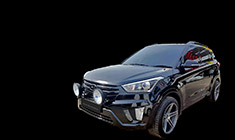News
Hybrid cars in India: Pros and cons of different hybrid drivetrains
Some examples of mild hybrid cars are Maruti Fronx and Brezza. Vehicles like the Honda City and Toyota Hyryder are strong hybrid models.
BHPian ferrarirules recently shared this with other enthusiasts.
With the rising popularity of EVs, Hybrid tech is also gaining traction. There is a lot of talk on the forum regarding different Hybrid options and their pros and cons. So here is thread to cover all the different hybrid drive train options.
The hybrid powertrains can be represented in the following diagram

Parallel Hybrid
Parallel hybrids have an electric motor, an internal combustion engine (ICE) and a small battery. They are of two types of implementation in parallel hybrids.
1. Parallel Hybrid aka Mild Hybrid
These vehicles have a small Li-Ion battery which is integrated with the Integrated Starter Generator. The car has regenerative braking to charge the small battery. This helps in the following functions:
- Auto Start/Stop - The engine shuts down when the car is idling and starts it up when you want to move ahead
- Torque assist to the ICE
Pros:
- Slightly higher fuel efficiency than pure ICE
Cons:
- No pure electric drive capability
- No major reduction in tail pipe emissions
- Engine cranks every time you start the car, no silent start up
- Annoying engine shutdown and startup in traffic
Examples - Maruti Smart Hybrid or Toyota Neodrive used in cars like XL6, Fronx, Brezza, Grand Vitara and Hyryder

2. Series - Parallel Hybrid aka Strong Hybrid
These vehicles have a small Li-Ion battery (around 1 KW) which is integrated with an electric motor plus there is an ICE. Both the ICE and electric motor can power the wheels using a power split device and planetary gear. The car has regenerative braking to charge the small battery. There are different scenarios in which either ICE or electric motor or both power the car -
- Dedicated EV mode which gives 2 - 3 kms range under light acceleration and at speeds under 40 kmph
- Electric motor powers the wheels and engine charges the battery in constant speed drive conditions below 75-80 kmph
- Electric motor plus ICE power the wheels under normal acceleration
- Heavy acceleration or speeds above 80 kmph - Petrol motor powers the wheels
Pros:
- Higher fuel efficiency than a pure ICE or mild hybrid car which entails to lower running cost
- Lesser per km emissions than pure ICE car or mild hybrid car
Cons:
- Very limited pure electric drive capability
- Still pollutes the urban areas
- Complex setup needs more components and algorithms to switch between the motor and the ICE
- Uses eCVT gearbox
- Costs more than Mild hybrid or Pure ICE car. Example - Toyota Hyryder mild hybrid V AT is Rs. 17.24 lakh ex-showroom and strong hybrid V AT is Rs. 19.99 lakh ex-showroom
Examples - Toyota Hybrid or Honda e:HEV (Honda has a slightly different implementation) used in cars like Maruti Grand Vitara, Toyota Hyryder or Honda City

Series Hybrid aka Range extended electric vehicle
- Better thermal efficiency as the ICE operates in optimal RPMs.
- Higher fuel efficiency than a pure ICE or mild hybrid car which entails to lower running cost
- Lesser per km emissions than pure ICE car or mild hybrid car
- Lesser complexity than a series parallel hybrid
- No gearbox needed
Cons:
- Very limited pure electric drive capability
- Still pollutes the urban areas
- 95 RON fuel required due to variable compression
Examples - Nobody is selling mass market series hybrid cars in India. Maruti is talking about bringing series hybrid in Fronx in 2025. Nissan sells series hybrid cars outside India.

Plugin Hybrid
- Pure electric range sorts out most of the city driving use cases
- Occasional hybrid trips can be made without the need of charging the car
- Higher fuel efficiency than a series parallel or series hybrid car. Running cost in the city can be near to EVs and on highways near to other hybrid vehicles
- Lesser per km emissions than pure ICE car or mild hybrid car or strong hybrid car.
Cons:
- In city, the car lugs around an ICE adding to extra weight
- On highways, the car lugs around a larger battery adding to extra weight
- If the user doesn't charge the battery, it still pollutes the urban areas
- If the user doesn't charge the battery, the fuel efficiency numbers will go for a toss
- Need to visit the fuel bunk to fill up the petrol tank.
Examples - Nobody is selling mass market plugin hybrid cars in India. MG has hinted on bring PHEVs to India.
Some history of different hybrids being covered on Teambhp
- Teambhp was invited to a Toyota Hybrid event in Japan in 2013. Toyota showcased both Strong Hybrid and Plugin Hybrid. Toyota launched mass-market hybrid in India in 2022 - Related thread
- Nissan note e-Power was caught testing in India in 2017. Nissan never launched the product in India - Related thread
- Plugin Hybrid for India? - The thread discussion was started in 2020. Not even one mass-market plug-in hybrid was launched in India - Related thread
Finally the question
Out of these which hybrid power train will you prefer or will you prefer an EV or will you prefer pure ICE - NA/turbo petrol/diesel
--Image credits to respective owners--
Here's what BHPian vinya_jag had to say about the matter:
Voted for PURE ICE
We are consciously trying to reduce Car usage in our family. This is mostly because of how the traffic around us is shaping up.
We take out our big car only on long drives which is kind of limited to around 5000Kms in a year. Our Workhorse Polo Diesel does the daily duties, which again has been limited by car pooling for routine drives, so the usage is down to around 50Kms per week (2500-3000Kms per year)
Newer cars are not getting any better dramatically anymore, other than powertrain and Gizmos. So, stick to your existing cars as long as it allows you to, fix dents, service them regularly, repaint.
And when the time comes to really really replace your car, a clean and efficient ICE car would do for us.
Added premium of 3-4 Lakhs (Considering a Honda City) for a Hybrid, and a similar premium for EVs too, I don't see a way how it would make economic sense for such low usage.
I agree, if you want the fun of driving an electric car, or if one likes the silent nature of those cars, or if there is no ICE model for a car that you love, you go for the alternate powertrains. But for most, it is the ICE that would make more sense. (YET)
Here's what BHPian riteshritesh had to say about the matter:
Nice information. Is there any difference between the ISG that the Kia Seltos IVT has and the Mild Hybrids of Suzuki /Toyota ( Ciaz/XL6 and the gang)?
I haven't seen any 'special' fuel efficiency on my Seltos nor is there any on the Ciaz in the family. I get 6~7 kmpl on the Kia IVT with ISG and 6~7 kmpl on a pure ICE Honda City CVT or the CVT BRV or a CVT Glanza.
his is for a daily 2 km to and 2 kms fro drive to work.
Here's what BHPian ashivas89 had to say about the matter:
Nice post OP.
For the sake of completeness, I'd like to add the fact that the biggest premise of both series and parallel strong hybrid systems these days is the non-conventional combustion cycle of the ICE. This is what enables mind-boggling fuel efficiency. The ICE in a hybrid powertrain does not bear the burden of "moving" the car by itself. Therefore, it can run on torque-deficient but efficient combustion cycles.
Another point is that the Honda hybrid system operates as a series hybrid for the most part and a pure ICE powertrain (via a direct clutch) for a very brief part of the speed range.
Check out BHPian comments for more insights and information.





.jpg)












